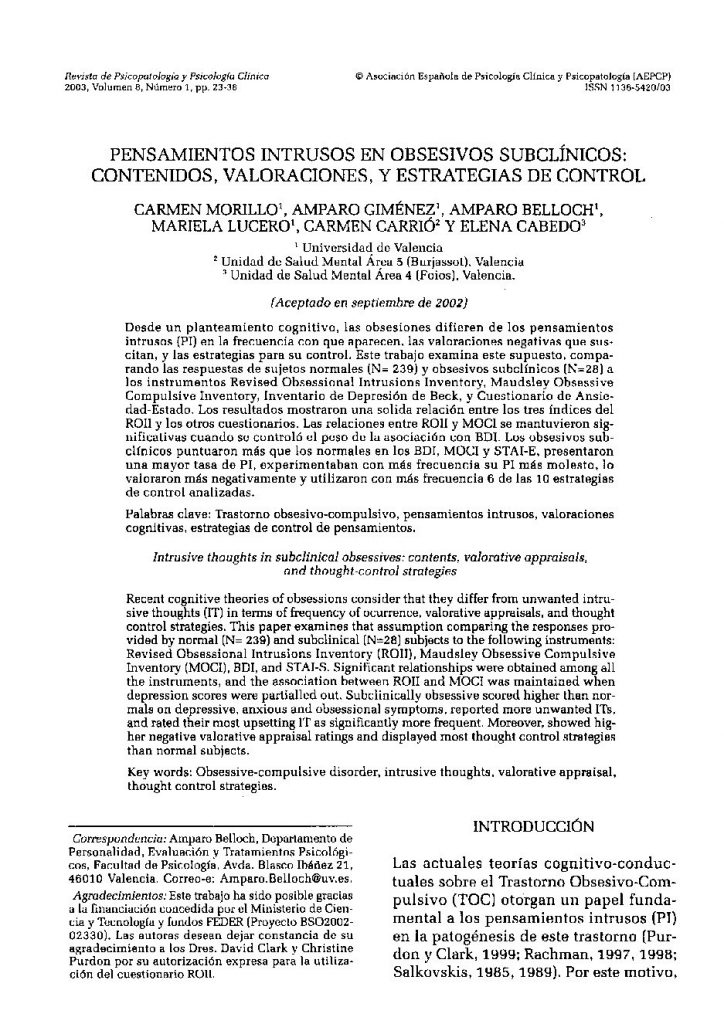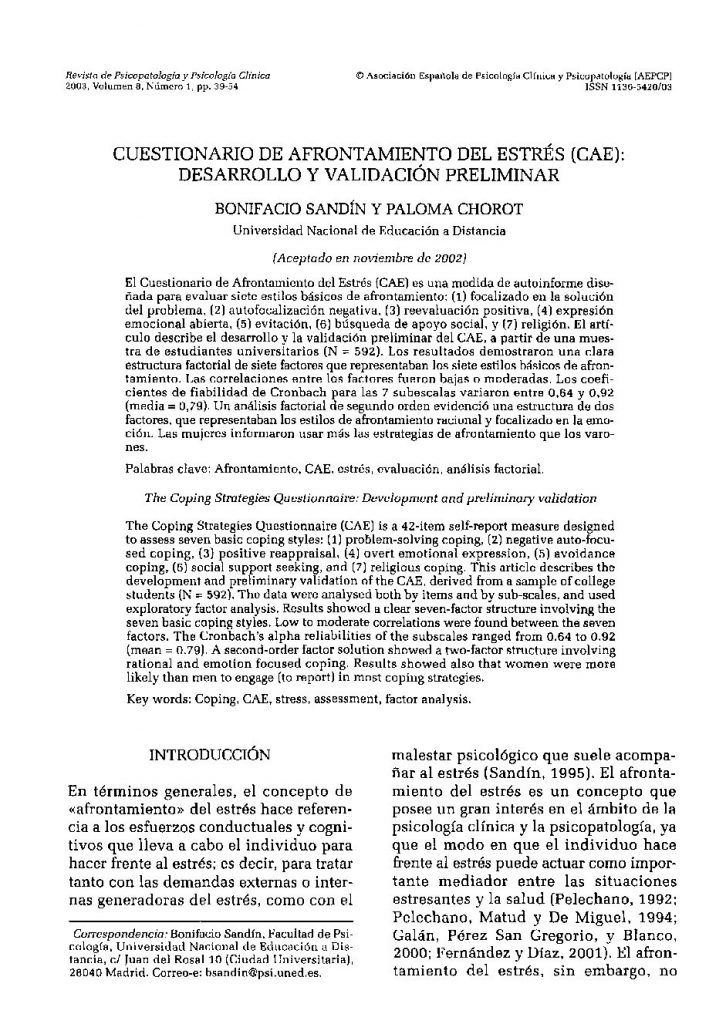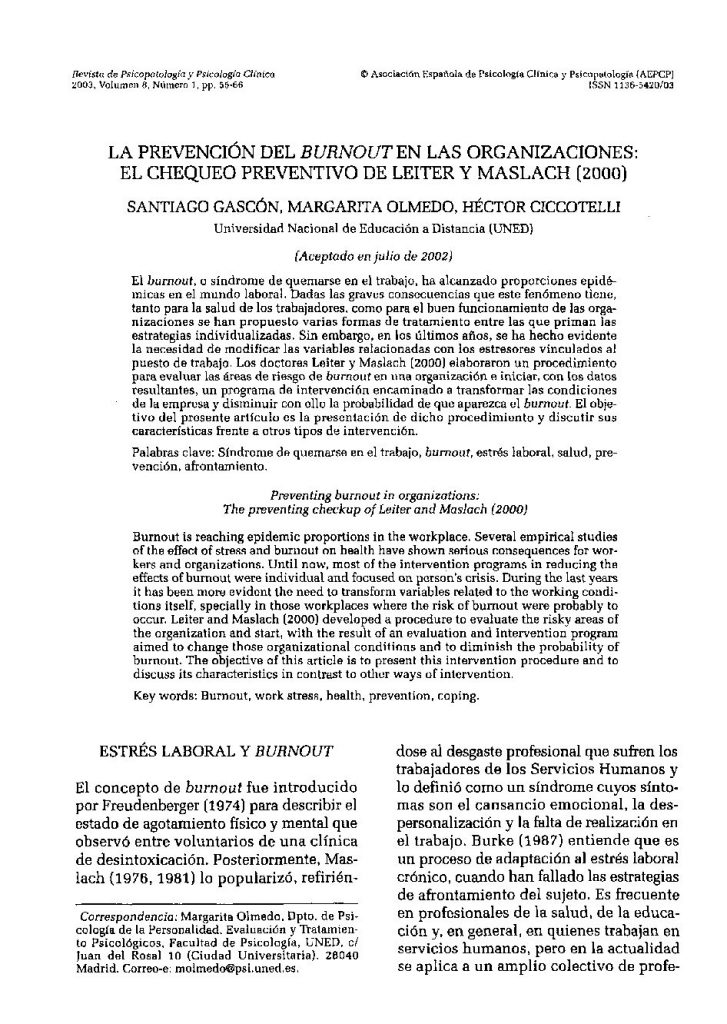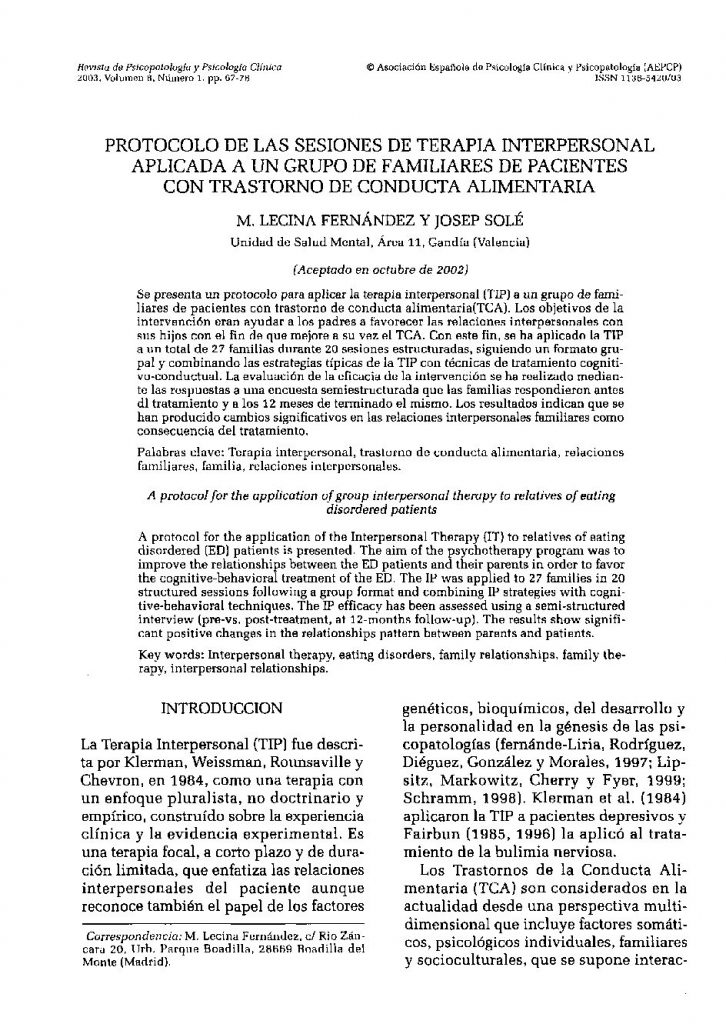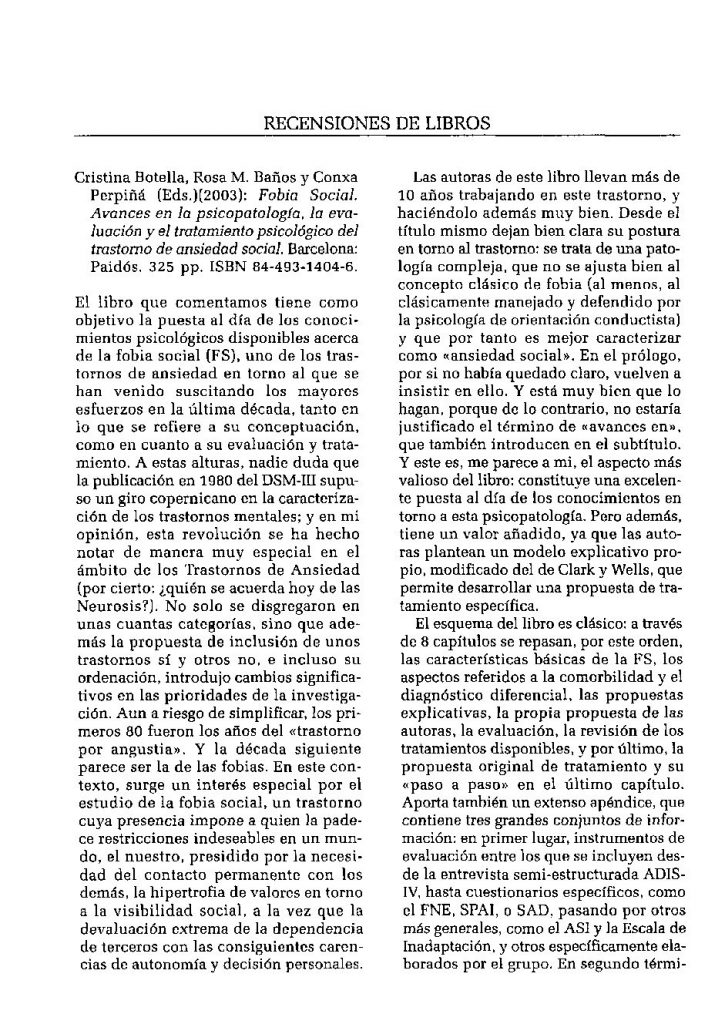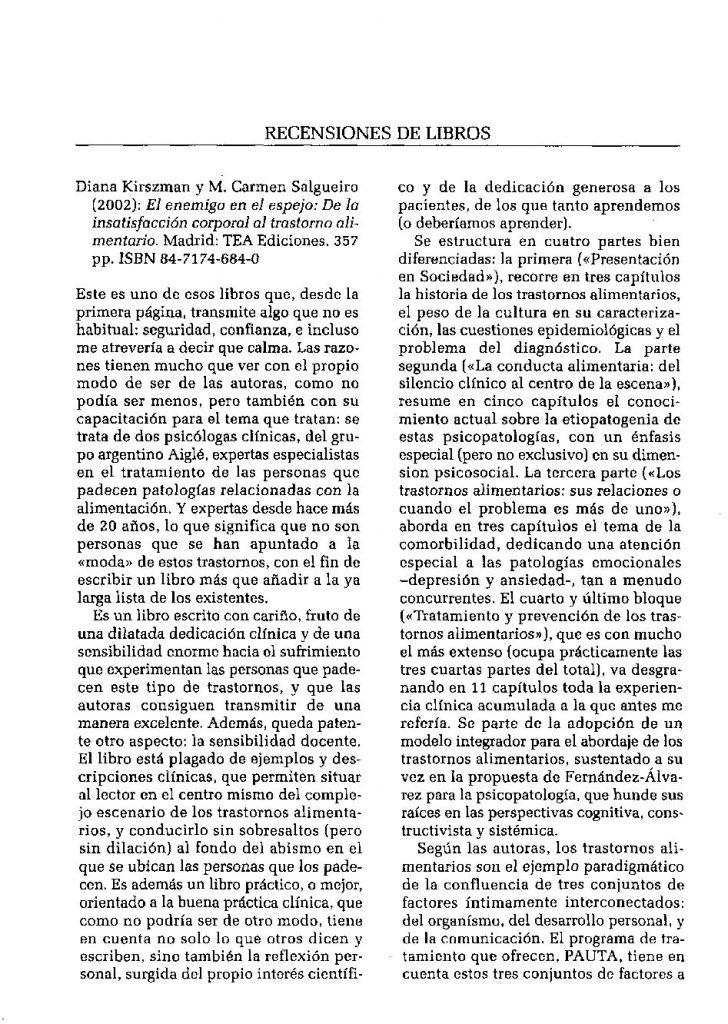Cuestionarios, inventarios y escalas de ansiedad social para adolescentes: Una revisión crítica.
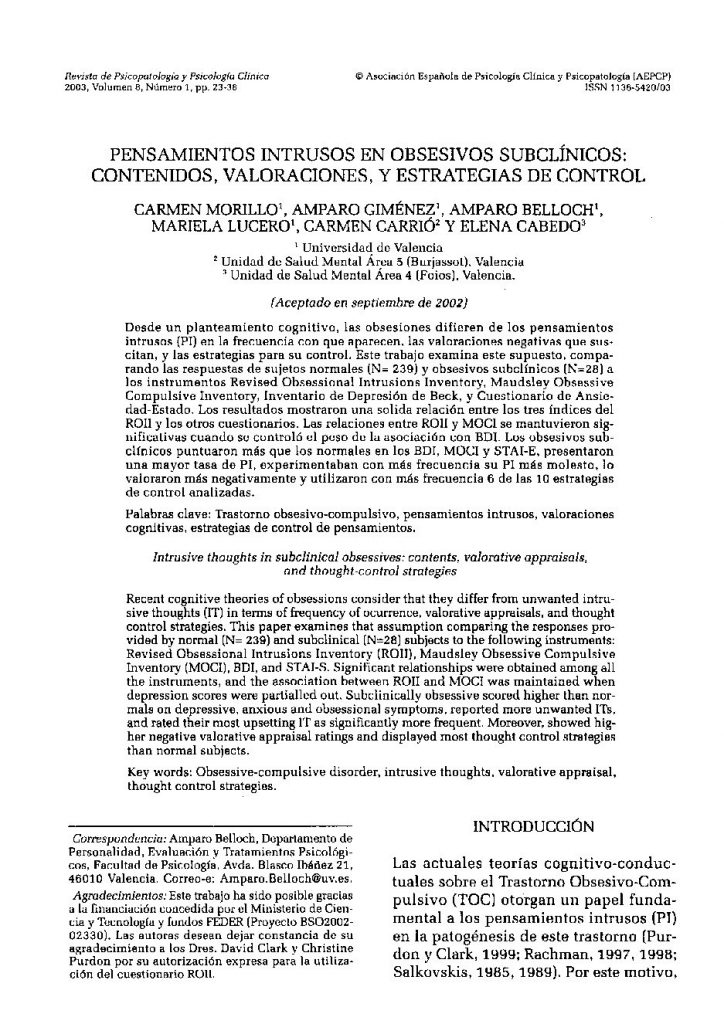
- Cuestionarios, inventarios y escalas de ansiedad social para adolescentes: Una revisión crítica.
- Pensamientos intrusos en obsesivos subclínicos: Contenidos, valoraciones, y estrategias de control.
- Cuestionario de Afrontamiento del Estrés (CAE): Desarrollo y validación preliminar.
- La prevención del burnout en las organizaciones: El chequeo preventivo de Leiter y Maslach (2000).
- Protocolo de las sesiones de terapia interpersonal aplicada a un grupo de familiares de pacientes con trastorno de conducta alimentaria.
- Cristina Botella, Rosa M. Baños y Conxa Perpiñá (Eds.)(2003): Fobia Social. Avances en la psicopatología, la evaluación y el tratamiento psicológico del trastorno de ansiedad social. Barcelona: Paidós.
- Diana Kirszman y M. Carmen Salgueiro (2002): El enemigo en el espejo: De la insatisfacción corporal al trastorno alimentario. Madrid: TEA Ediciones.
The aims of this study were two. First, the social anxiety questionnaires, inventories and/or scales developed and validated in the adolescent population (Social Anxiety Scale for Adolescents, SAS-A, and Questionnaire about Interpersonal Difficulties for Adolescents, QIDA) and the adolescent adaptation of the instruments firstly developed and validated for Englishspeaking adult population (Personal Report of Confidence as Speaker, PRCS; the Fear of Negative Evaluation Scale, FNE; the Social Avoidance and Distress Scale, SAD and the Social Phobia and Anxiety Inventory, SPAI) are described. Second, a psychometric comparative study about these instruments is presented, thus the reliability (internal consistency and temporal stability) and construct validity (factorial structure, relationships with others questionnaires, relationships with others assessment procedures, discrimination between groups and treatment outcome) of these instruments are compared.
El objetivo de este trabajo fue doble. En primer lugar, se describen los cuestionarios, inventarios y/o escalas de ansiedad social elaborados y validados para población adolescente (Escala de Ansiedad Social para Adolescentes, SAS-A y Cuestionario de Evaluación de Dificultades Interpersonales para Adolescentes, CEDIA), así como las adaptaciones para adolescentes de instrumentos originariamente elaborados y validados para población adulta anglo-parlante (Cuestionario de Confianza como Orador, PRCS; Escala de Miedo a la Evaluación Negativa, FNE; Escala de Ansiedad y Evitación Social, SAD y Inventario de Ansiedad y Fobia Social, SPAI). En segundo lugar, se realiza un estudio comparativo a partir del cual se establecen una serie de conclusiones en relación con la fiabilidad (consistencia interna y estabilidad temporal) y validez de constructo (estructura factorial, relación con otros cuestionarios, relación con otros procedimientos de evaluación, diferenciación entre grupos y detección de cambios en pretest-postest-seguimiento) de estos instrumentos.



